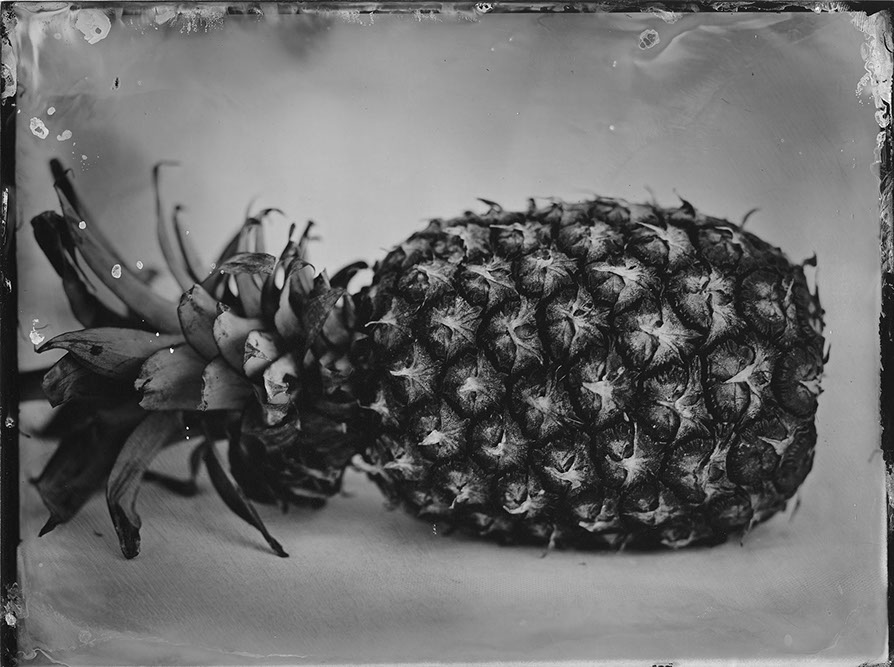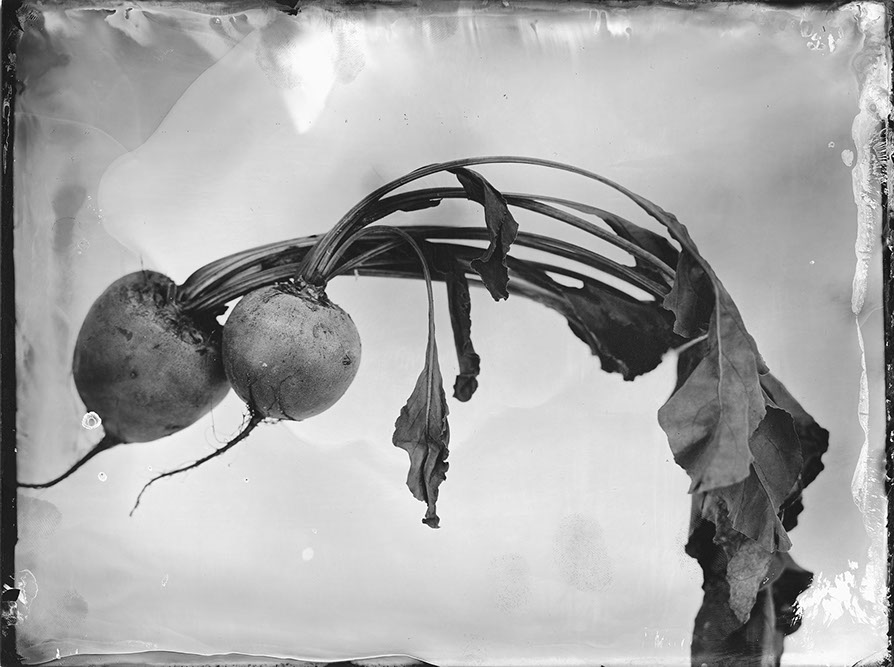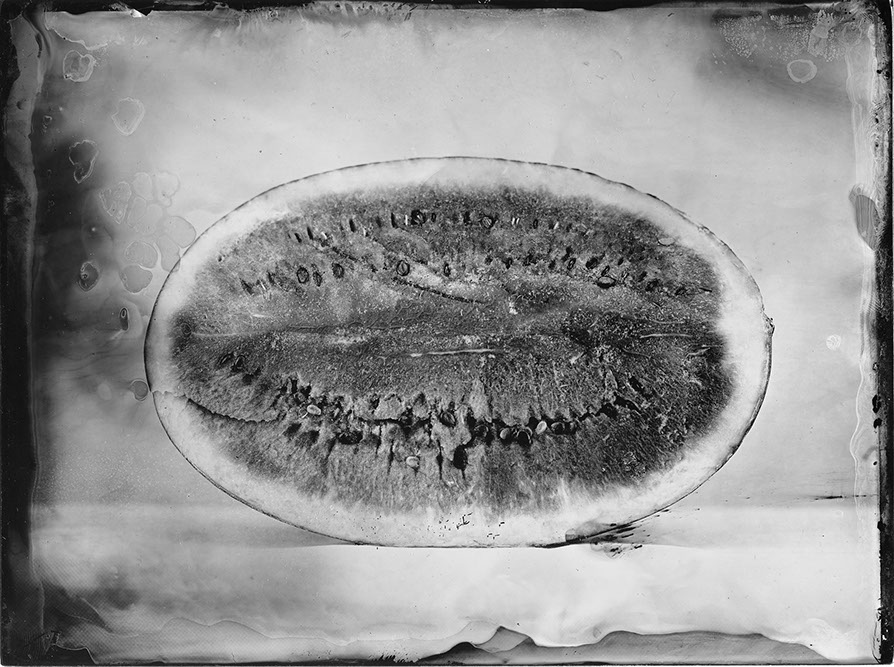Hell's Kitchen
 “Hell’s Kitchen” is, it would seem, a rather unobvious name for a photographic exhibition. However, just after crossing the threshold of Marcin Andrzejewski’s atelier, one of the basic attributes of the kitchen hits our nostrils: a bouquet of intense smells. However, this is not the scent of prepared food, but a mixture of alcohol, ether and other chemicals that are unidentifiable to the untrained nose. After a while, we get used to the diabolical smell and begin to absorb with our eyes the vegetables and fruits – the silent protagonists of the exhibition. Personification is not incidental here – what is usually considered food, here transforms into theatrical actors in new roles of models. We see their diversity, the dynamics of their structure mimicry, and when juxtaposed on stage, they show a new perspective on the kitchen, while spreading the perspective of tasty dishes. Cooking and Photography,” says Andrzejewski, ”are my life. And it is the passion for finding a common denominator for both that is felt most strongly in the set of images we see in “Devil’s Kitchen.”
“Hell’s Kitchen” is, it would seem, a rather unobvious name for a photographic exhibition. However, just after crossing the threshold of Marcin Andrzejewski’s atelier, one of the basic attributes of the kitchen hits our nostrils: a bouquet of intense smells. However, this is not the scent of prepared food, but a mixture of alcohol, ether and other chemicals that are unidentifiable to the untrained nose. After a while, we get used to the diabolical smell and begin to absorb with our eyes the vegetables and fruits – the silent protagonists of the exhibition. Personification is not incidental here – what is usually considered food, here transforms into theatrical actors in new roles of models. We see their diversity, the dynamics of their structure mimicry, and when juxtaposed on stage, they show a new perspective on the kitchen, while spreading the perspective of tasty dishes. Cooking and Photography,” says Andrzejewski, ”are my life. And it is the passion for finding a common denominator for both that is felt most strongly in the set of images we see in “Devil’s Kitchen.”
The distinctive blend of scents accompanying the exhibition is no coincidence. It is directly related to ambrotype, the technique used to create these gourmet paintings. It has been used since the 1850s, but few photographers use it today. The technique requires discipline, patience and a lot of work, but the creation process itself is extremely fascinating. First, a layer of collodion is applied to a glass plate cut to final format and sensitized with silver nitrate, after which the photographer has about 10 minutes to take and develop the image. This is an exciting moment, as there is no guarantee that the image will be created. However, if it succeeds, the creator gets a completely unique work of art and great satisfaction. Just like when experimenting in the kitchen.
Ambrotype, like the art of cooking, is very demanding. In one painting we have both negative and positive. It is important to focus attention on details, sharpness and let’s still remember the chemical process… Therefore, showing the “Devil’s Kitchen” is a gesture similar to serving a complicated meal. An important role is fulfilled, just as when serving a dish, its elaboration and presentation.
At the moment, making 300 paintings per hour is no mean feat. But Andrzejewski slows down the pace, stops in front of the object to celebrate it and serve it in a tasteful way, touching all the senses.
Marek Poźniak


